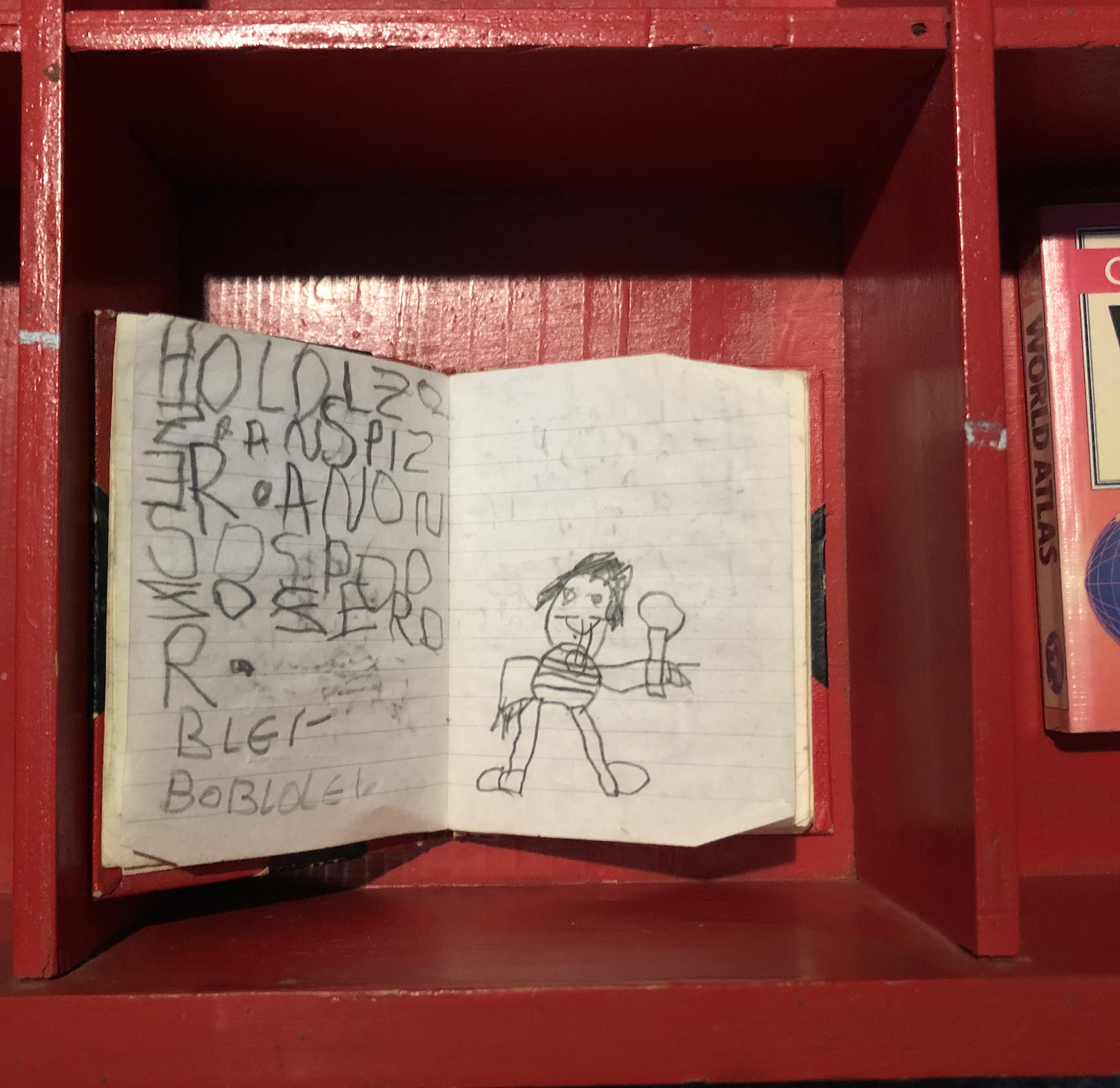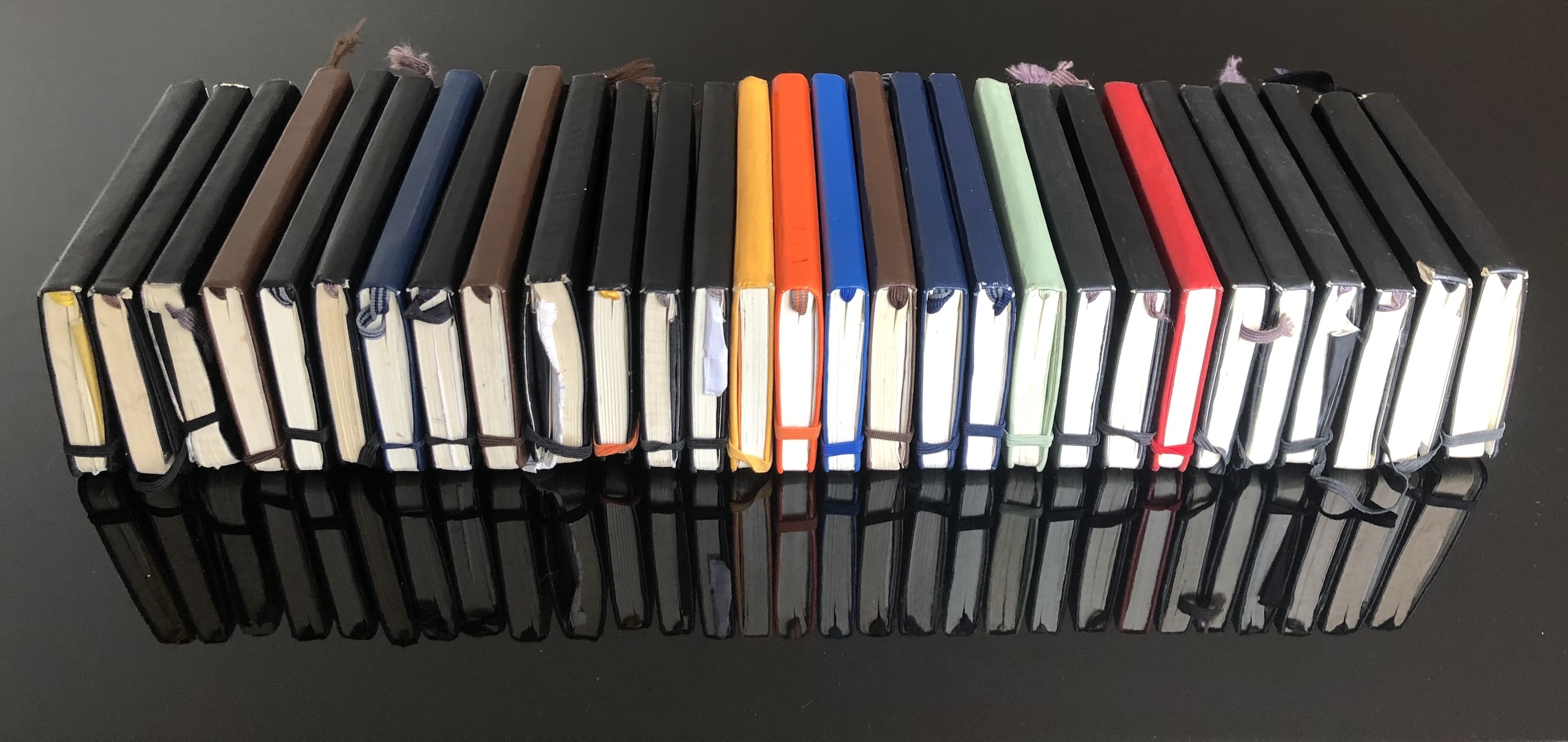The first thing I wrote down were the numbers on license plates.
I must have been five or six when I got the black book with its red spine and corners. Many days I spent on the stone pillars in front of our house, holding watch over the street, the notebook in my hand.
My grandparents built the house where I grew up, enclosed by a wooden fence with two columns flanking the cast iron gate. In front, a street led up a forested hill where the ruins of a mediaeval castle peeked out from between the trees.
I went to school up that hill, in the small town founded by the Romans around the hot springs bubbling up from seams in the Black Forest.
The spa guests may have wondered about the boy sitting on the pedestal, with a pencil stub behind his ear and a heavy briarwood pipe drooping from his lips. Whenever I clambered up the black gate to my vantage point, I had perfected my outfit as private detective, for which the pipe, borrowed from my father, was indispensable, regardless of the taste of cold ashes biting my tongue.
Between pages with rows of license plates and secret alphabets the notebook shows a drawing of my hero and role model, Kalle Blomkvist, in a striped shirt, with magnifying glass in hand and pipe in mouth.

Kalle is a teenage private detective in a series of books by Astrid Lindgren. Just a matter of routine, he used to say when he pulled out his notebook and pencil stub – one could never know which detail might later solve the case.
And so I sat on my post, jotting down license plates just like Kalle.
Admittedly, the pages in my notebook filled slowly. Fewer cars passed by than did polyester-clad pensioners. Further uphill, the Magic Mountain had long lost its lustre.
“I can imagine the boredom that here prevails in general,” Anton Chekhow had written about the place where I started school, eight decades before I was born. It was place where he had come to die, after all.
Among a child’s first requests is ‘tell me a story’. Not only our body but also our curiosity needs nourishment.
The walls of our house were lined with books, many of which my parents read to me and my sister when we were small.
In the little world in which I grew up, those people who left the most indelible marks on me were the ones who introduced me to the realms hidden behind book spines, maps, or ruins.
At school, it was my Latin teachers who fed this hunger. One of them taught us Ovid as well as Darwin. He drove a white Renault 5 that was held together by little more than stickers from camping places all around the Mediterranean.
At university, everybody would be like him, I was sure of it.
Fifteen years or so after I began scribbling into my first notebook I bought another one. I was living in Italy at the time and already a few years into my studies of Classics. A minuscule Roman “i” marks the title page of that book, purchased in a side street off the Piazza Navona.
From there on, my collection continued to grow.

It was the worlds of art and Renaissance men, the stories lurking behind the objects that made it feel natural to take notes again. Travelling with archaeologists and art historians, armed with a pencil stub behind my ear, I kept watch for anything curious, eager to return to the library to find out more about what I had seen.
What kept me reading was to be found outside the campus, I realized.
Like berries or wild oats, we pick up diverse meaningful things along our paths. We gather and value them together, taking them out to nourish ourselves and share them with others. The first cultural device, some anthropologists argue, was not the spear but a sort of bag: something to keep more than can be held in two hands.
If gathering and sharing are deeply rooted in our human nature, then it is a truly human rhythm to which this project tries to tune in. A rhythm that senses resonance and picks up the seeds of stories along the paths where curiosity wanders. Of tending the soil so that they can sprout and grow in peace, and of sharing the bounty of their branches.
Too long, didn’t read is a seedbed where stories evolve from stories. Where the items we gather and the encounters we make on our paths, or on the unintended detours, can grow into something that offers sustenance to others, forming bridges between the past and present.
Don’t except a finished product – all of this is an ongoing process.
There are many pages still to be filled.
^ I can imagine the boredom: Anton Chekhow in letter to W.M. Sobolewski, quoted from Rolf-Dieter Kluge, “Anton Tschechow in Badenweiler”, Spuren 45 (1998), p. 4.
^ The first cultural device, some anthropologists argue: See Ursula K. Le Guin’s now classical essay “The Carrier Bag Theory of Fiction” (1986), whose diction I follow in these paragraphs. For this text Le Guin drew inspiration from the ‘Carrier Bag Theory of human evolution’ that Elizabeth Fisher developed in her book Women’s Creation. Sexual Evolution and the Shaping of Society (Garden City, N.Y.: Anchor Press, 1979).